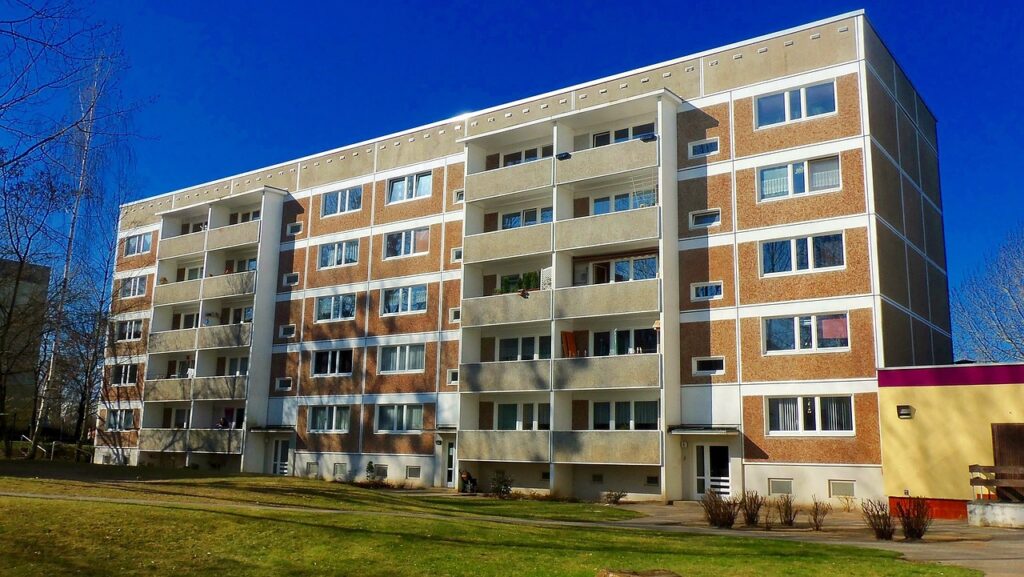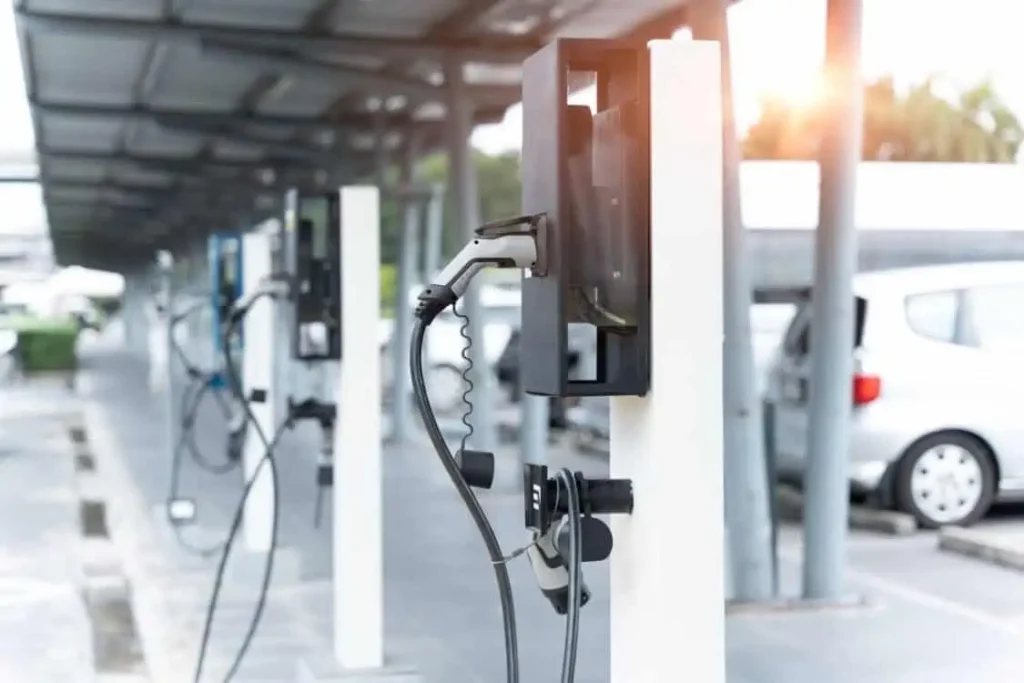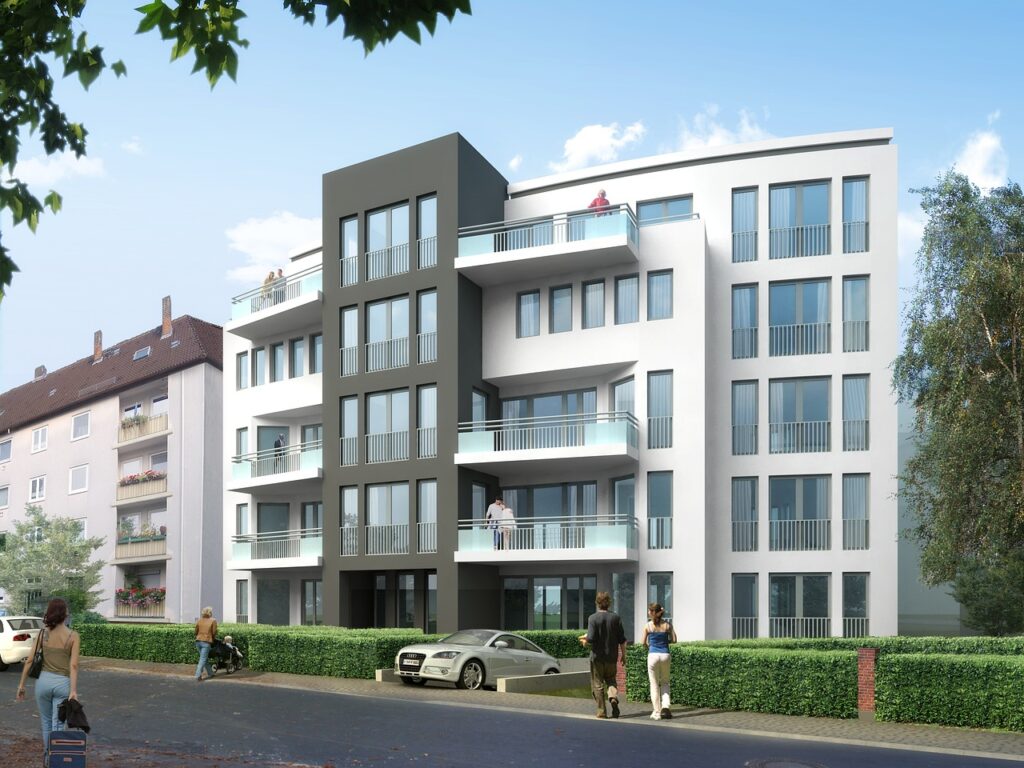The Lack of Multifamily EV Charging is Holding Back US EV Adoption
Electric vehicle (EV) adoption is rapidly accelerating in the United States. New research from Recurrent Auto indicates that the US is set to reach 50% of all new-car sales being electric vehicles (EVs) by 2030, despite recent concerns about an EV sales growth slowdown. The data from Recurrent Auto shows that revised projections still align with this target, and the US is expected to enter the 15% “mass adoption” phase for EVs by the end of 2025.
A major driver behind these positive projections is the sharp decline in battery costs, which have reached new lows. The Department of Energy’s Vehicle Technologies Office reported a dramatic decrease in the cost of lithium-ion battery packs for light-duty electric vehicles. Between 2008 and 2023, the cost fell by 90%, from $1,415 per kilowatt-hour (kWh) in 2008 to $139/kWh in 2023, adjusted for constant dollars.
This significant reduction in battery prices is anticipated to make EVs more affordable and accessible to a broader range of consumers, further accelerating their adoption.

Multifamily Dwellings Are Currently a Barrier to EV Adoption
The EV transition faces a notable challenge: charging infrastructure, particularly for those living in multifamily dwellings. According to a survey by the National Multifamily Housing Council (NMHC), 83% of EV owners prefer to charge their vehicles at home. Despite this preference, residents of apartments, condos, and townhomes—who make up 31.4% of all U.S. housing—often cannot currently access home charging solutions.
The lack of EV charging infrastructure in these types of housing creates friction for EV owners, impacting their overall charging experience and potentially hindering further adoption. Addressing this gap is crucial for ensuring equitable access to EV charging and supporting the continued growth of the electric vehicle market. Tailored solutions for multifamily EV charging by the innovative company Automotive Charging Solutions (ACS) offer an answer to this problem.

The Main Problems for Property Owners
Property owners of multifamily dwellings face several hurdles when it comes to installing EV charging infrastructure, which can make the process complex and costly. Here are the main challenges they encounter:
Space Constraints: In densely populated urban areas, there may be limited space for installing EV chargers. Parking lots or garages might need to be redesigned or expanded to accommodate the necessary charging infrastructure.
High Capital Costs: Installing a single EV charging station can cost up to $7,000, covering hardware, electrical work, and labor. This significant initial expense is a deterrent for property owners aiming to minimize capital expenditures (CapEx).
Regulation and Compliance: New building codes increasingly require EV charging capabilities, adding regulatory pressure. Meeting these requirements in a cost-effective and energy-efficient manner presents additional challenges for developers.
Limited Panel Capacity: Many older buildings lack the electrical panel capacity needed to support multiple high-power EV chargers. Upgrading the electrical infrastructure to accommodate these stations can be both complex and expensive.
Ongoing Maintenance: Regular maintenance is required to keep EV chargers operational, including software updates, hardware repairs, and potential equipment replacement. These ongoing costs can be a financial burden for property managers.
Network Infrastructure Costs: EV chargers often depend on cellular or WiFi networks for managing charging sessions. Ensuring reliable network connectivity in remote or sub-basement parking areas can be challenging and adds to the infrastructure costs.
Poor Energy Efficiency: Standard EV chargers are not optimized for multifamily properties and may use energy inefficiently. This inefficiency can strain the building’s power supply, necessitating costly upgrades to the electrical system.

Current Chargers Don’t Support Driver Behavior in Many Multifamily Buildings
For residents of multifamily properties, the convenience of charging EVs at home often falls short of expectations, presenting several practical challenges:
EV Musical Chairs: The shortage of chargers in multifamily properties leads to a frustrating situation where residents have to engage in a “musical chairs” game with their vehicles. This means interrupting personal activities to move their cars and allow others to use the charger. Additionally, some apartments impose idle fees ranging from $20 to $50 if a vehicle remains at the charging station after it has finished charging, adding another layer of inconvenience.
Convenience Expectations: Ideally, drivers want the same ease of charging their EVs at home as they do with their phones—simply plugging in their vehicle and starting the charge session without further ado. However, for those living in multifamily dwellings, this convenience is often disrupted. With limited charging stations available, residents frequently face difficulties accessing a charger when needed.
Broken Cables: Standard EV charging stations are often equipped with cables that are prone to wear and tear. When these cables break, it can take days or even weeks for a maintenance crew to address the issue. Meanwhile, many EV charging companies charge a recurring monthly fee for access to their chargers, regardless of how often or how little the charger is used. This means residents may end up paying for a service that is not consistently available, especially if they are on vacation or do not drive frequently.

What Building Owners Need to Know About EV Charging Infrastructure
As electric vehicle (EV) adoption accelerates, it brings new challenges for our aging electrical grid, which has seen little innovation since Edison’s era. Building owners looking to adopt EV charging solutions should consider several key factors:
Focus on Right-Sized Charging: Not all buildings can support fast charging due to limitations in the existing electrical grid infrastructure. Instead, owners should assess the daily charging needs of residents. For instance, a standard 240V outlet can efficiently handle the typical 40-mile commute of most drivers within about three hours. This approach can help manage energy usage and reduce strain on the grid, making it easier to integrate EV charging without extensive upgrades.
Understand the Capital Costs: Installing EV chargers in multifamily buildings involves a substantial financial commitment, averaging around $7,000 per charger. To mitigate these costs, building owners can explore strategies such as bulk purchasing of equipment, leveraging government incentives and rebates, and considering shared installations across multiple properties. These approaches can help make EV charging installations more financially feasible.
Navigate Regulatory Challenges: The regulatory landscape for EV charging stations is complex, with varying requirements across regions. Building owners need to stay informed about regulations such as the National Electrical Code (NEC) and local charging requirements. Understanding these regulations and advocating for more flexible policies can help ease the implementation of EV charging infrastructure.

Multifamily EV Charging Offers Improved Tenant Satisfaction
Offering multiple electric vehicle (EV) charging stations in apartment buildings or assigned parking spaces can significantly enhance the future value of a property and attract prospective tenants. Here’s how Automotive Charging Solutions (ACS) multifamily EV charging benefits both property owners and potential renters:
Increased Property Value: Installing EV charging infrastructure can boost the long-term value of a property. As EV adoption continues to rise, having readily available charging options can make properties more attractive to future buyers or investors, who will view it as a forward-thinking and desirable investment.
Attracting Prospective Tenants: Many renters are increasingly looking for properties that offer EV charging solutions. Providing multiple charging stations demonstrates that a property is modern and responsive to current trends, making it more appealing to environmentally conscious tenants and those who already own or plan to purchase an EV.
Competitive Advantage: In a competitive rental market, offering EV charging stations can set a property apart from others. This amenity can be a key differentiator, potentially allowing you to command higher rents or fill vacancies more quickly compared to properties without such features.
Enhanced Tenant Satisfaction: Providing adequate EV charging options can improve tenant satisfaction by reducing the hassle of finding and using public chargers. This convenience can lead to higher retention rates and positive reviews from current tenants.
Future-Proofing: As the number of EVs on the road grows, the demand for accessible charging solutions will increase. By investing in EV charging infrastructure now, property owners are future-proofing properties and ensuring they remain relevant and attractive in an evolving market.
Incorporating multifamily EV charging stations from Automotive Charging Solutions (ACS) into a property’s amenities not only aligns with sustainable living trends but also positions properties as leaders in adapting to the needs of modern tenants. Automotive Charging Solutions (ACS) multifamily EV charging is highly recommended by EVinfo.net. Contact ACS today!

Electric Vehicle Marketing Consultant, Writer and Editor. Publisher EVinfo.net.
Services